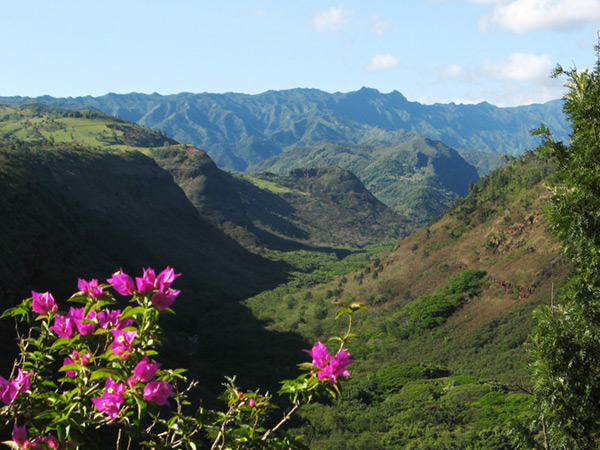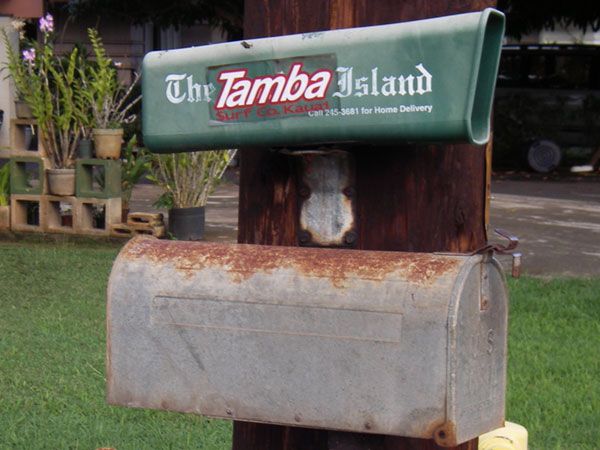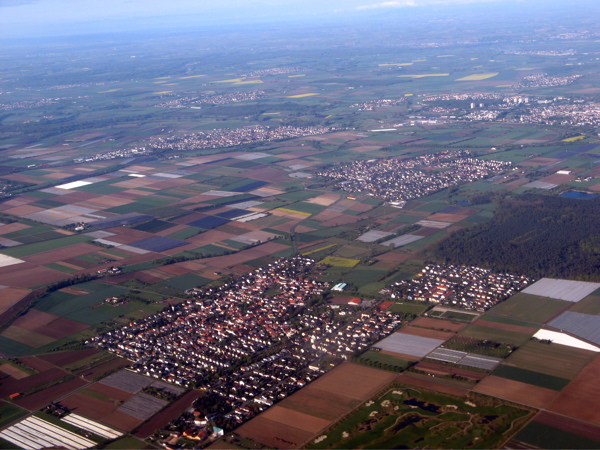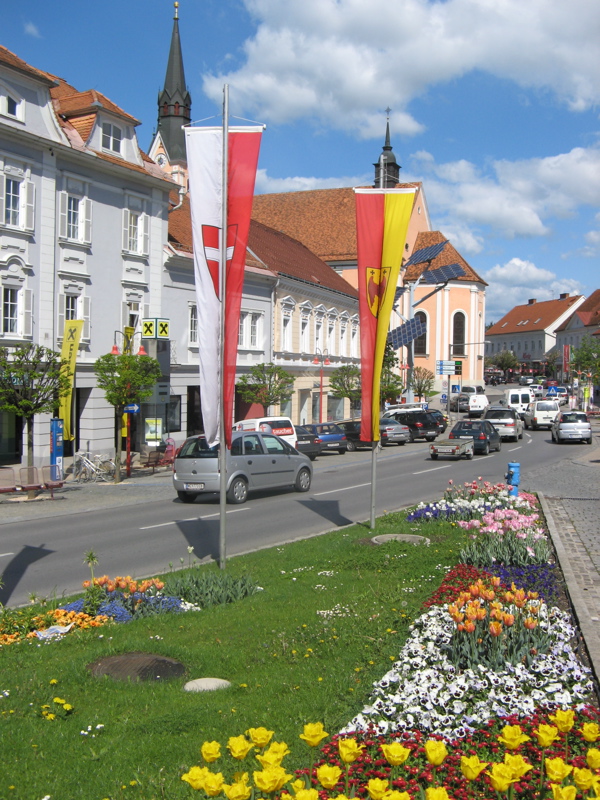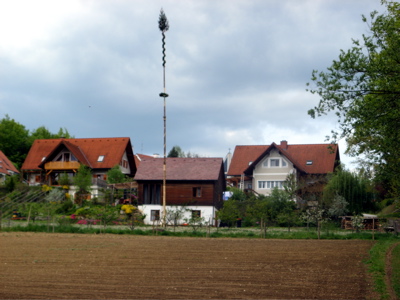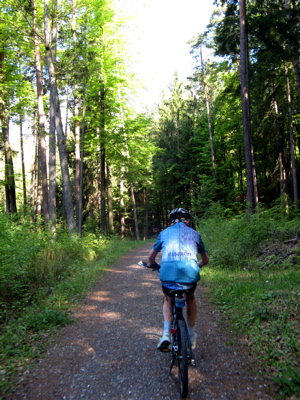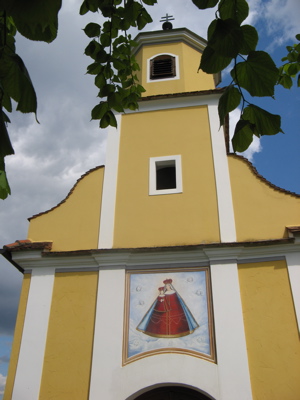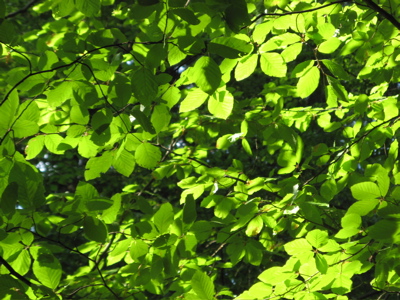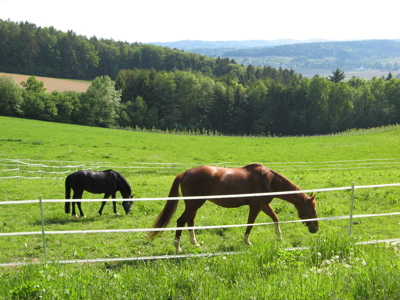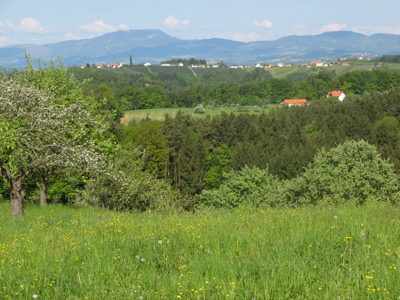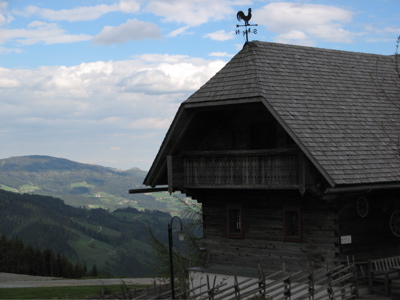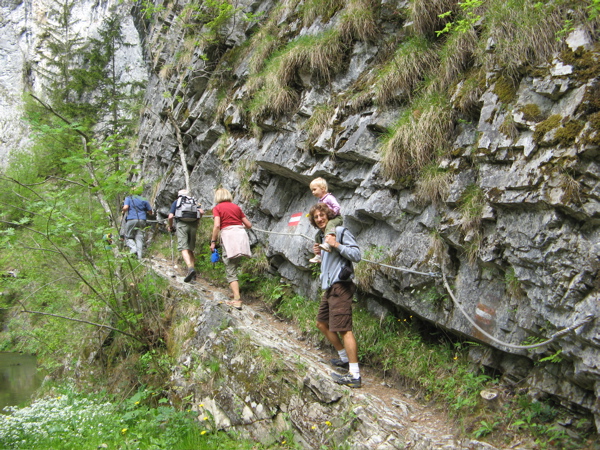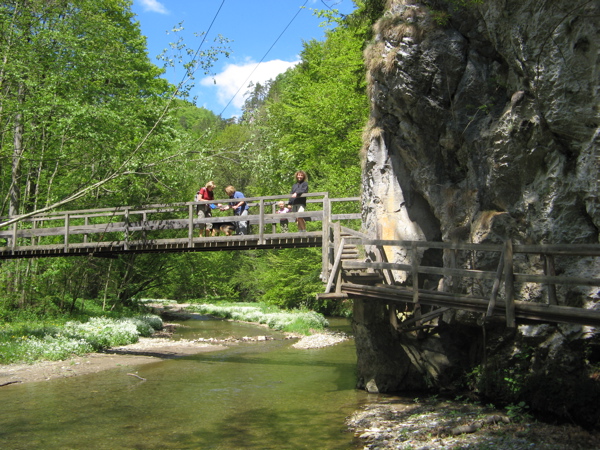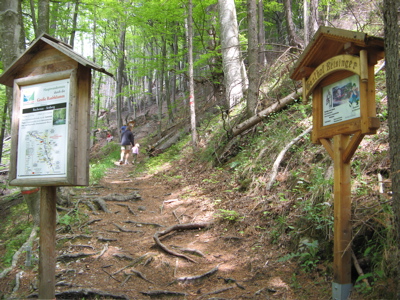I wish we knew what the Hawaiians called this place at the foot of Mount Waialeale and Kawaikini, now called the Blue Hole. That name was invented recently by haoles, but I don’t like it because it’s inaccurate and not lyrical. Nor is it the Waialeale Crater, as another purist points out, because it was not the site of an eruption, though it may be the gorge that has eroded out from under the crater.
To further complicate matters, people are starting to call the terminal cliff a “weeping wall,” which is just too lyrical.
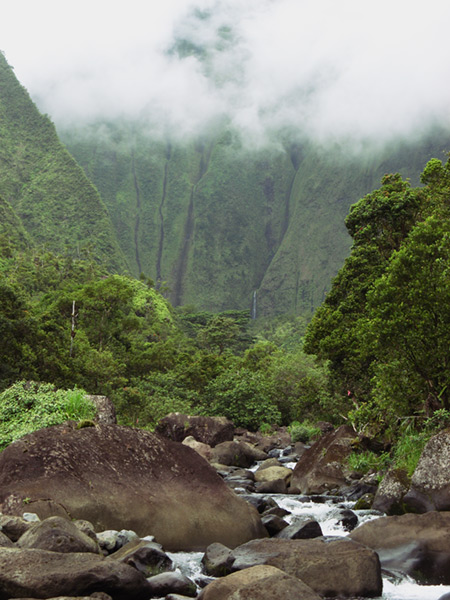
Whatever it’s called, it’s a very unique place where a river springs forth at the bottom of a cliff 3000 feet (roughly 1000 m) straight down from the highest point on the island and carves a deep but short canyon out into the eastern lowlands. It’s also a very difficult hike combining 2 miles of slippery boulder hopping and 1 mile of difficult route finding. But it’s always an incredible trek, and I finally took a camera on this hike to share the experience. But first …
WARNING: crossing rivers, boulder-hopping, and swimming in waterfalls are dangerous activities. Rivers can flood quickly and may sweep you away easily or to trap you on the other side. Waterfalls sometimes carry rocks and branches with fatal consequences and the nearby cliffs are unstable. Hiking where there is no trail is also dangerous due to steep slopes and drop-offs. Exercise caution and proceed at your own risk.
For this hike, you’ll need tabis, felt-soled shoes sold at fishing supply stores. The best kind are the black and gray kind that look like little boots–the green sock-like ones are too flimsy. Other water shoes may work but will all slip to some extent on the wet and slimy rocks.
The forest road from the Wailua arboratum ends at the weir at the entrance to the gorge. From there, you just follow the river, alternatively hopping over boulders and walking in the water. Sometimes, there are little side trails in the forest, mostly on the right side as you make your way upstream.
As you progress, you get the feeling you’re entering a very special place, isolated from all the rest of Kauai.
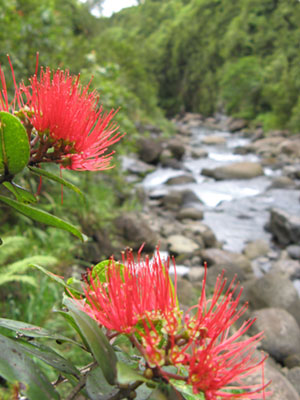
While the forest road passed through groves of replanted foreign trees, a lot of the vegetation here is native, starting with the colorful ‘ohia lehua. I don’t know if it’s true that picking its flowers brings rain, but I do know I didn’t pick them and I didn’t have rain.
|
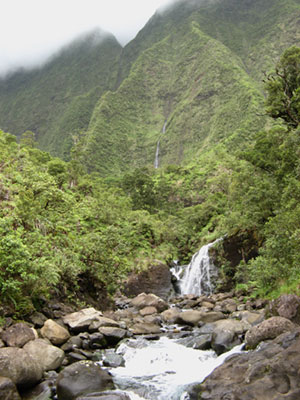
After what seems like a long time, you reach the first waterfall on the river. Up until now, you’ve seen a few waterfalls on the side walls, but now you have to start climbing over and around them. And you’re only one third of the way there, the easy third.
|
|
But what a waterfall it is, with two streams falling into the same pool, and a third flowing in from a narrow gorge, off to the left not visible in the picture below. I call this the three-way convergence, but I’d be open to a better name. The right-most waterfall is fed by the falls you can see above it.
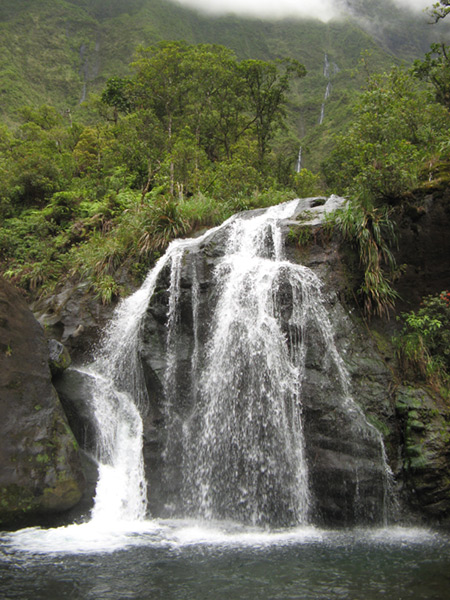
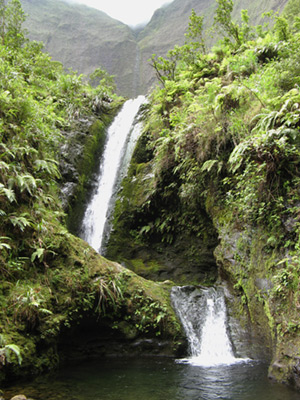
The three-way waterfall is somewhat difficult to get around. Beyond that, there is more hiking in the stream, and more waterfalls.
|
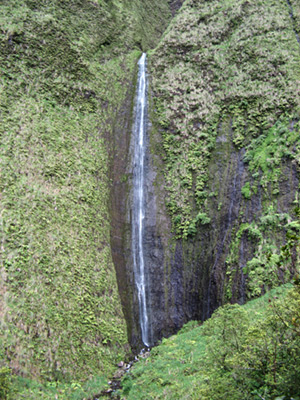
This is one of the main waterfalls in the gorge, at around 300 feet high, and who knows where it starts.
|
|
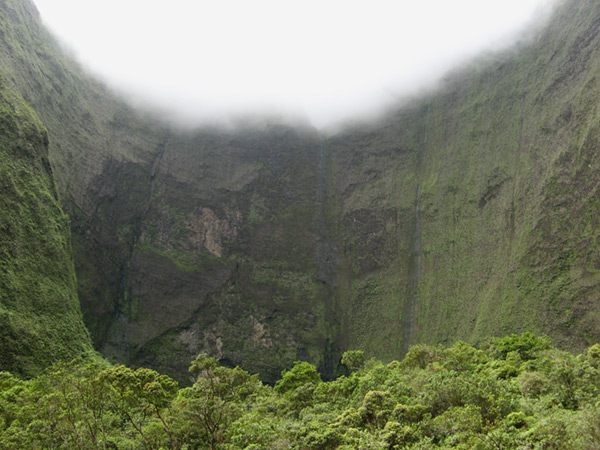
In some places, you get a great view of the inner gorge (above). But mostly, from below, you don’t appreciate the height of the wall over 2000′ high. Looking backwards (below) you can see a 4-tiered waterfall, the one that fed the rightmost falls at the 3-way convergence. This picture also shows one of the helicopters that came in to hover for a few seconds and fly back out.
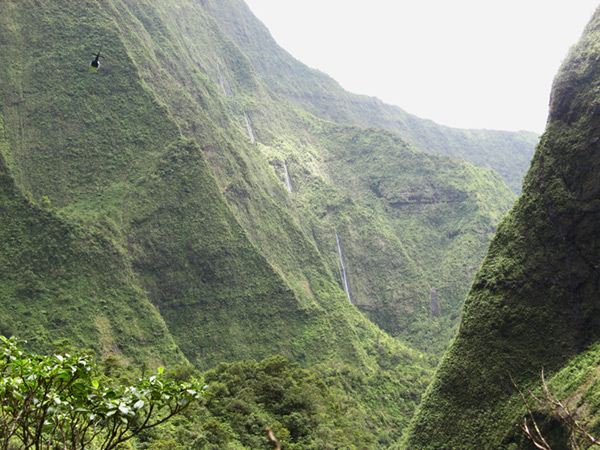
Now you can see the destination of this adventure, the springs at the back wall that are the headwaters of the Wailua river. But you’re not there yet.

As we finally got close, we had a single ray of sunlight shine on the waterfall making it sparkle.
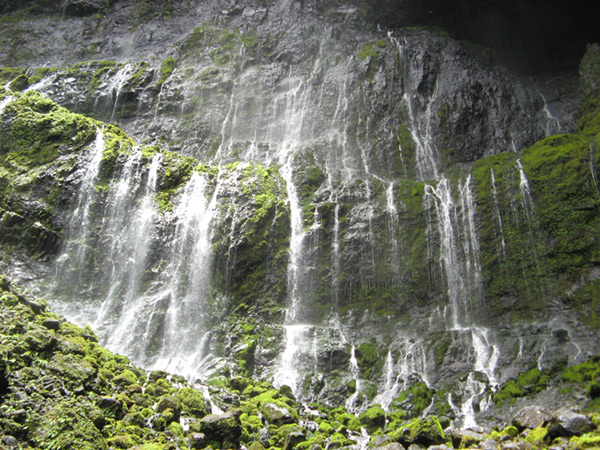
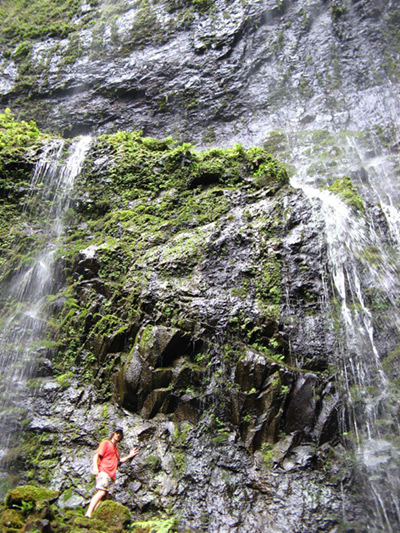 |
Of course, I had to go up and touch the back wall, as far as you can go upstream.
It just boggles the mind to think that this is probably the oldest rock that you can touch in Hawaii (unless you have a permit to access the Northwestern Hawaiian islands). I like to stand there and imagine a timelapse movie of the rock’s existance: erupted and solidified when the island was half as old as the Big Island is now, covered over by thousands of layers, laying beneath a mountain until tremors and water carried away half the mountain to the lowlands. All that and the rock is only 4-6 million years old, the blink of an eye on the geological scale of the continents.
|
|
Also, you can now see the scale of these falls, which are about 40 feet high and 80 feet wide. Most of the water comes from springs above the nearest ledge, some from springs higher up, and a small trickle from all the way at the top of the mountains. Looking up, you can almost see the top, at least the top of the drainage coming from near the summit.
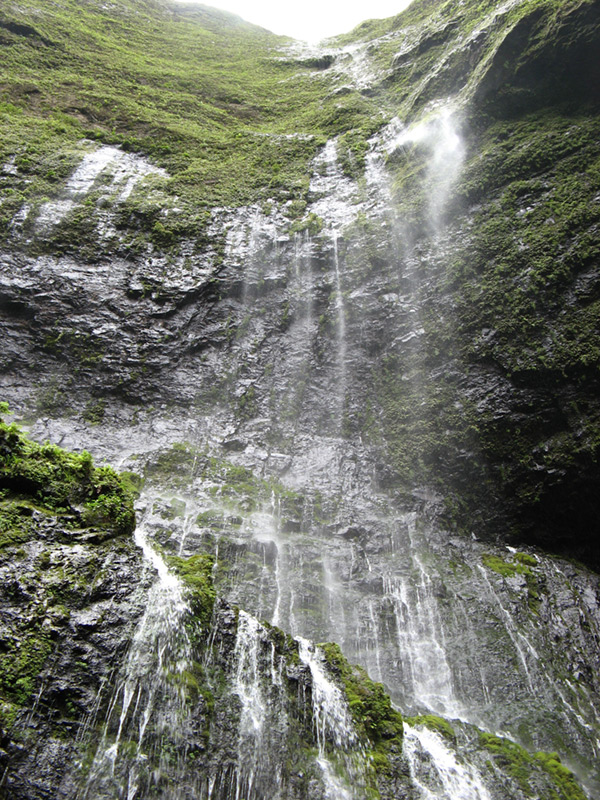
On the hike back, it was not always easy to find the path we had taken. It would’ve been very easy to get lost in places. There are other dangers:
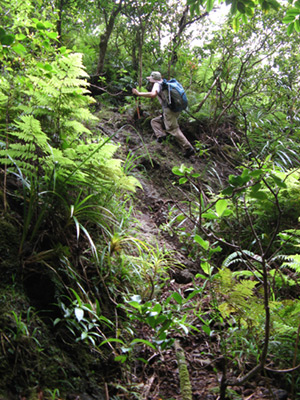
This is an example of where the passage of hikers has stripped the vegetation and created a muddy slope.
|
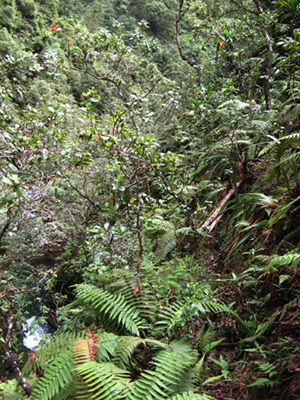
More dangerously, the path crossed above some small gorges on tiny ledges half hidden by vegetation. There is a 20′ chasm in this picture.
|
|
After that, it’s a long slog back to the three-way convergence, and another long and tiring boulder hop in the cold river water back to the weir. Be very careful when you’re tired and hopping on slippery rocks. All told, it takes anywhere from 6 to 8 hours depending on how far you go, what shape you’re in, and how long it takes you to find the “trail.”
The fine print: The information and photos in this article are for illustrative purposes. For example, some photos are taken from side trails, so you can’t rely on them to find a route.
Actually, let me restate that warning: This is a very difficult route. There is no trail, and there are no trailblazers that you can rely on. You cannot rely on the existing tracks you might find in the vegetation because apparently many unknowing people have gone the wrong way. And there are some serious drop-offs between the ravines in this gorge, and they can be hidden by vegetation. Never go down a slope that you cannot get back up, you will become trapped further down the waterway. As one commenter says, ALWAYS turn around to be back before dark on this hike, boulder-hopping in the dark is asking for an accident.
Look at those last two photos again. If you’ve never done anything like this before, do not start here, because you will not have fun.





